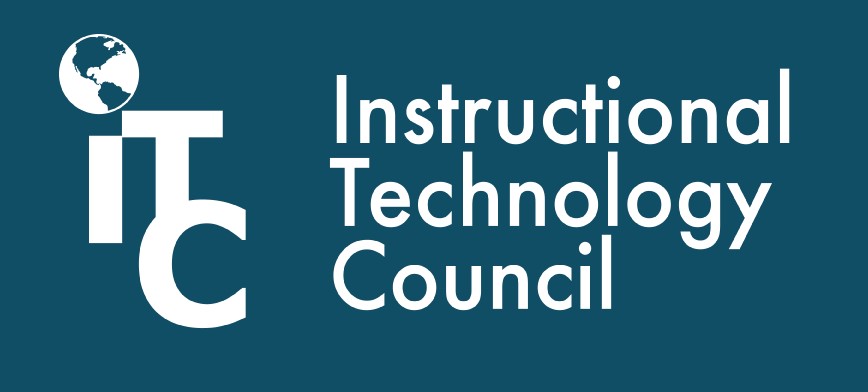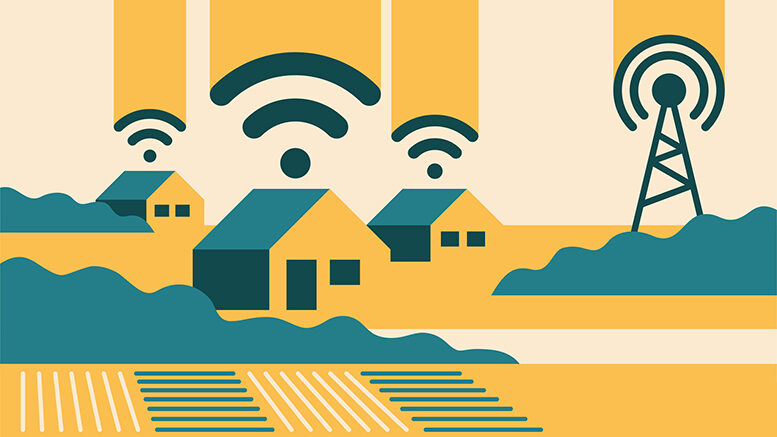Three decades ago, only the rare community college leader understood what the Internet was and even fewer had used Gopher and ARPANET, earlier forms of the medium that evolved into today’s World Wide Web. Today, our lives are immersed in apps and device technology in ways the early purveyors of Star Trek failed to imagine. As the Instructional Technology Council (ITC) continues its series on distance learning over the next 10 years, how our students gain access to the required tools is integral to our future.

Broadband is the common name for the networking technology bringing internet, video, phone service and more into our daily lives. A sensor in your home feeds medical data to your physician or a video call allows grandparents to stay involved with a new grandchild miles away. We work, shop, read and learn online every day. At least, most of us do.
According to the National Telecommunications and Information Administration (NTIA), more than 25% of the nation is still without internet access. In response, the Broadband Equity, Access, and Deployment (BEAD) Program is now getting underway to assure that every household in the nation will have access to a quality internet signal. Adding to BEAD, federal funding from the U.S. Department of Agriculture, U.S. Economic Development Administration, Federal Communications Commission and other agencies will push new capital investments past the $60 billion mark.
States, impatient for service following the nightmare of Covid, are adding their own dollars. In essence, every home in the nation should have a quality internet signal by about 2030.
100 mbps to the home
The provision of the new money should end up defining a household as being able to receive a 100 megabits per second (mbps) internet feed to consider the home served. 100 mbps means that a home can simultaneously view four streamed movies, support three gamers, include two video calls and still have excess bandwidth to run household appliances, although it may be getting tight.
Where fiber technology is in place to provide 100 mbps, it is generally feasible to offer 1,000 mbps, or one gigabit, over the same wires with only a minor upgrade. Before 2030, only the most unusual home would exceed this need. As a result, distance learners will have the capability to access from home or remote teaching locations about any resource they can acquire onsite.
Over the past decade, colleges have adopted internet-driven devices to monitor and control the physical plant. Nursing education and other health-related fields have integrated mechanical and digital simulations into their clinical repertoire. Last week, I visited Lamar State College-Orange (Texas), where the maritime program is training boat captains, pilots and crew how to plot routes, avoid obstacles and navigate weather, all in a simulated lab. Universal internet will allow access to this digitally intensive learning from anywhere.
We are already seeing the tools that will bring about a new age in teaching and learning. Virtual reality opportunities have moved from requiring million-dollar price tags. Today, realistic costs are capped in the thousands. Open-source options costing less than a textbook can even do the same, conducted from home.
Remote monitoring of the learning process has also been simplified through technology and, particularly for younger dual-credit students, can be accomplished at high school and other remote locations with onsite mentoring.
Artificial intelligence, although still at a startup phase even with tools like ChatGPT, Google Bard or Bing AI, will emerge in forms to remotely monitor student progress and provide tutorial support.
The advent of the digital native
In an earlier essay in this series, Martin Hoffman shared a story of his son who was gaming and learning with an international cohort of friends. As amazing as his experience was in the framework of time, it is repeated daily by six- to 20-year-olds surrounded since birth by digital technology. These digital natives bring a new approach to learning.
Covid gave me an opportunity to pursue an additional master’s opportunity, becoming a student again in a class of 20- to 50-year-olds. Particularly with the students in their 20s, it was fascinating to see the approach to studying and learning from a perspective I had not seen as a teacher. Going to lecture was preceded by viewing videos from other experts. Searching for materials from and even contacting primary sources was not unusual. And, as the cohort was both diverse and international, interacting with and using the experiences of their peers was common.
The best faculty in the program, however, saw themselves and the class members as a learning team rather than in the traditional roles. Although the faculty initiated and influenced the students’ activities, students often created the projects and materials used in their work, brought in external advisors for their actions, and built their projects online, all remotely during Covid. Universal internet will make this scenario even more common and hopefully bring in NTIA’s remaining 25%.
Closing the gap
Of course, reaching the final 25% will have its challenges. Arguments remain over the definitions of served, underserved and unserved households and how that will impact the distribution of funding. The least served locations today, including remote rural and low-income inner-city sites, are also the least capable of performing well in a traditional competitive grant scenario requiring nonexistent grant writers and funding for technical and demographic support.
The funding agencies are seeking ways to overcome the barriers but could be hindered by political wrangling and vested interests. That’s an article for another day.

